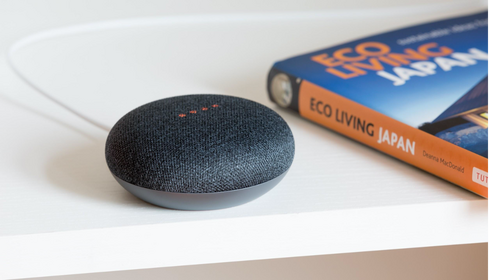
What was once a nascent technology is now becoming more mainstream, now the adoption of voice technology using assistants via smart speakers and other voice-enabled devices has made a leap over the last few years. About one in four (24%) US adults 18+ own a smart speaker (around 60 million people) and U.S. households with smart speakers own an average of 2.6 smart speakers. Many more devices such as smartphones have voice-enabled and this presents a major opportunity for brands to tap into.
Voice assistants are used by people for all kinds of tasks such as playing music, searching for an answer to a question, checking the weather, playing music, setting a timer or reminder, sending a text or email calling, getting traffic directions, and opening an app.
Voice Tech Assistants are Transforming Our Lives
For users, voice assistants remove friction and create a more enjoyable experience. Language is what makes us human. Almost everyone knows how to talk and now computers finally speak our language. It’s hands-free and allows users to do other things at the same time such as driving or cooking. Finally, voice is fast: On average, we speak 150 words per minute, we type 40 words per minute and we text 24 words per minute.
For brands, voice provides another channel in the omnichannel strategy to communicate with consumers. Voice can help brands personalize their relationships with their consumers and it can improve customer experience especially when voice is combined with AI.
Voice Technology Misconceptions and Challenges
Although voice assistants provide many opportunities for users and brands, they are not perfect. Some of the current challenges and misconceptions around voice assistants are:
- Technical challenges such as speech recognition and understanding that needs to be improved to make voice assistants more reliable.
- Discoverability of voice skills is one of the biggest hurdles as it leads to low engagement and retention issues.
- There is a lack of trust of voice assistants. Some people are skeptical to trust it with sensitive tasks such as handling money while it does not understand simple questions.
- Voice is not the next interface that will replace others, but a new interface that will coexist with other interfaces that each play to their strength.
- In some instances using voice interfaces may not be a good idea, for example in public spaces: With many of us working in open offices, using voice to activate and use devices in the office will be chaos.

At Key Lime Interactive, we are passionate about voice technology because of the contextual challenges and issues that come with designing for voice that makes user research much more important. As a result, we are going to be exploring various different topics surrounding voice technology on our blog, such as:
Voice & The New Normal
Now with Covid-19 staying us at home brands and consumers are now seeing the increasing value of voice assistants being used in the home. Using voice assistants also means that people can avoid touching their devices such as smartphones and light switches. Alexa users can also use the assistant to take the first step in diagnosing Covid-19 Amazon announced on March 26. Stay tuned for our article next week, where we dive more into the impact of voice technology on healthcare.
Voice & Customer Support
Customer service is essential to businesses and voice assistants can help make the often tedious experience of contacting customer service more pleasant. A voice assistant can understand the problem by engaging in a dialogue and without the customer having to answer a lot of questions.
Voice & E-Commerce
Voice assistants are commonplace in the living room and business and that’s an opportunity for e-commerce. Especially a transactional task like re-ordering an item is a use case that is getting more frequently used.
Voice & Transportation
More vehicles have internet access and speech recognition systems in the car enable drivers to integrate voice assistants. Voice assistants in cars and other vehicles can provide users with entertainment and utility on their commutes, which will be useful especially in the future of autonomous cars.
Voice & Popular Media
Voice assistants and speech recognition have been a topic of imagination in movies and on TV long before the first assistant came out. In Star Wars, R2D2 was not able to speak in English but could understand spoken instructions and in Star Trek, the crew of the Enterprise activates their computer by a voice saying “Computer”.
Getting Started with Voice Technology
So you have been thinking about diving into Voice but you are unsure where to even get started? Stay tuned for more articles on voice tech coming up on our blog and contact info@keylimeinteractive.com for more information on how we can help!
Sources
Cathy Pearl - Designing Voice User Interfaces
VUX World podcast
The Smart Audio Report Winter 2019
READ MORE: Amazon Echo and the Key Lime Miami Office, The Role of UX in Conversational AI, Do’s and Don’ts of Enterprise Chatbot Building, When to Use Zero UI: A Researchers Perspective










Comments
Add Comment